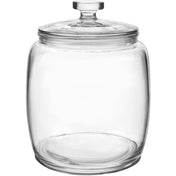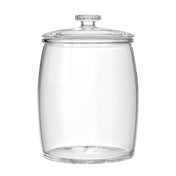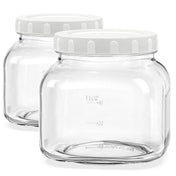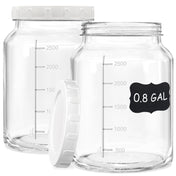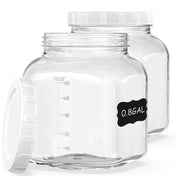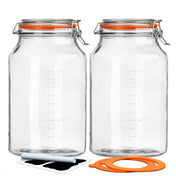Kimchi is one of Korea's most beloved dishes, a fermented vegetable side dish that is both tangy and spicy, bursting with flavor. This traditional Korean delicacy has gained immense popularity worldwide due to its rich taste and health benefits. We hope you’ll follow our recipe and create your very own kimchi, enjoying this flavorful dish with rich cultural significance.
What Is Kimchi?
Kimchi is a traditional Korean dish made from vegetables—most commonly napa cabbage or Korean radish—fermented with seasonings like chili pepper, garlic, ginger, and fish sauce. The fermentation process creates beneficial probiotics that improve gut health, boost the immune system, and provide an array of vitamins and minerals.
Kimchi is more than just a side dish in Korean meals; it is considered a symbol of family, tradition, and resilience. It is enjoyed with almost every Korean meal, from rice dishes to barbecues, and is even incorporated into soups, stews, and pancakes.

Key Ingredients for Kimchi
The beauty of kimchi lies in its versatility, but some essential ingredients define its flavor profile. Let's take a closer look at the primary ingredients.
1. Napa Cabbage (Baechu)
Napa cabbage is the most commonly used vegetable for kimchi, prized for its texture and ability to soak up the seasonings. It provides a crisp bite while allowing the fermentation process to work its magic.
Why Napa Cabbage?
Napa cabbage has a mild flavor that perfectly balances the strong seasonings, unlike other cabbage varieties that can be too bitter. Its broad, thick leaves are ideal for holding onto the seasoning paste, ensuring that every bite is packed with flavor.
2. Korean Radish (Mu)
Korean radish, also known as daikon or mu, is another essential ingredient in kimchi. It adds a crunchy texture and a slightly sweet, earthy taste to the dish.
Why Korean Radish?
Korean radish is denser and less pungent than other varieties of radish. It retains its crunch even after fermentation, providing a pleasant contrast to the softer cabbage. The radish also contributes a subtle sweetness that balances the spiciness of the chili paste.
3. Gochugaru (Korean Red Pepper Flakes)
Gochugaru, the iconic Korean red pepper flakes, gives kimchi its distinctive fiery heat and vibrant red color. The quality and type of gochugaru you use will significantly affect the flavor of your kimchi.
Why Gochugaru?
Gochugaru is less pungent than typical chili flakes, giving kimchi a mild yet deep heat. It has a unique smoky flavor, which makes it essential for authentic kimchi. Using fresh gochugaru can make a huge difference in the taste, adding more depth and complexity.
4. Garlic and Ginger
Garlic and ginger are key ingredients for kimchi's aromatic and pungent flavor. They provide warmth and earthiness, enhancing the overall taste profile.
Why Garlic and Ginger?
Garlic offers a bold, savory note, while ginger adds a zesty, fresh kick. These ingredients complement the spicy gochugaru and balance out the fermented flavors that develop over time.
5. Fish Sauce or Salted Shrimp Paste (Saeujeot)
Fish sauce or shrimp paste adds a savory umami flavor that intensifies the kimchi's taste. This ingredient may be optional for vegetarian versions but is essential for traditional recipes.
Why Fish Sauce or Shrimp Paste?
Fish sauce or salted shrimp paste contributes the "fermented" element, which deepens the flavor and aids the fermentation process. It also provides a rich, salty umami flavor that balances the sweetness of the radish and the heat of the chili flakes.
6. Sugar
A small amount of sugar is often added to the seasoning paste. It helps activate the fermentation process by feeding the beneficial bacteria that will ferment the vegetables.
Why Sugar?
Sugar assists in the fermentation process, helping to promote the growth of beneficial lactobacillus bacteria. It also adds a slight sweetness to balance the salty, spicy, and sour elements in the kimchi.
Step-by-Step Guide to Making Kimchi
Now that we've discussed the ingredients, let’s walk through the process of making kimchi. The beauty of homemade kimchi is that you can customize the flavors to suit your taste.
Step 1: Prepare the Vegetables
- Cut the Napa Cabbage: Slice the napa cabbage into quarters or halves, depending on your preference.
- Salt the Cabbage: Sprinkle salt between the leaves of the cabbage, ensuring the salt penetrates deeply. Allow the cabbage to rest for 4-6 hours. This process helps draw out moisture from the cabbage and softens it, making it more receptive to the seasoning paste.
-
Prepare the Korean Radish: Peel and cut the radish into thin matchsticks or bite-sized pieces.

Step 2: Make the Seasoning Paste
- Combine Gochugaru, Garlic, Ginger, and Fish Sauce: In a large mixing bowl, combine the gochugaru, crushed garlic, grated ginger, fish sauce (or shrimp paste), and a bit of sugar.
-
Add Water to Form a Paste: Gradually add water to create a thick, smooth paste. You can adjust the amount of water based on your desired paste consistency.

Step 3: Mix the Vegetables with the Paste
- Rinse and Drain the Cabbage: After the cabbage has softened, rinse it thoroughly to remove excess salt.
-
Coat the Vegetables: Wearing gloves, take a handful of the seasoning paste and gently massage it into each cabbage leaf and radish. Be sure to evenly distribute the paste.

Step 4: Ferment the Kimchi
- Pack the Kimchi into a Jar: After thoroughly coating the vegetables, tightly pack the kimchi into a sterilized glass fermentation jar. Press down gently to ensure there are no air pockets, which can hinder fermentation.
-
Fermentation: Close the jar and leave it at room temperature for 1-3 days to allow the fermentation process to begin. Check the kimchi daily to ensure that the vegetables remain submerged in their brine. If necessary, press down the vegetables to keep them covered with the brine.

Step 5: Store the Kimchi
Once your kimchi has fermented to your liking (the longer it ferments, the more sour it becomes), transfer the jar to the refrigerator. The cold temperature will slow the fermentation process, preserving the kimchi for weeks.
Choosing the Right Ingredients: A Comparison
While napa cabbage and Korean radish are the most commonly used vegetables in kimchi, there are many other variations that can be made depending on availability and personal preference. Let's compare some alternative choices:
- Cabbage vs. Bok Choy: Bok choy can be used as an alternative to napa cabbage, but it has a more bitter flavor and a smaller texture. It's better for lighter, less dense kimchi.
- Radish vs. Carrots: If you're looking for a sweeter option, you could use carrots instead of Korean radish. However, carrots are less crunchy and will soften more during fermentation.
- Fish Sauce vs. Seaweed: For vegetarians, seaweed can be used as a substitute for fish sauce. It adds umami without the animal-derived ingredients.
Kimchi is more than just a spicy, tangy side dish—it's a celebration of culture, health, and tradition. With a little time and effort, you can create this delicious and nutritious dish at home. By understanding the importance of ingredients, the cultural history behind kimchi, and following the step-by-step process, you'll be able to enjoy fresh, homemade kimchi anytime you like. So, grab your fermentation jar and start making your own batch of kimchi today!




